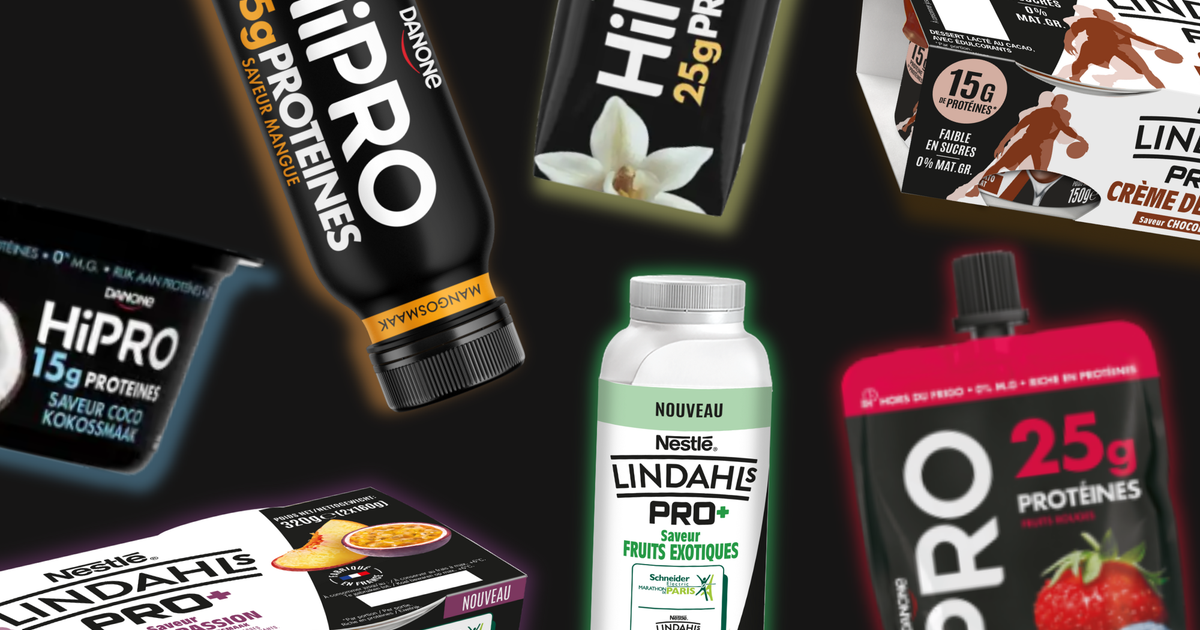Massimo Castellari, a researcher at the Institute of Agrifood Research and Technology (IRTA) in Monells (Girona) and an expert in new proteins, this Wednesday in the center's chromatographic analysis laboratory. Toni Ferragut
In the coming years we are going to incorporate into our diet alternative proteins based on products as diverse as microalgae, yeast or mushroom ferments, protein extracts of plant origin or even insects or laboratory meat.
This is what Massimo Castellari believes, who coordinates the strategic initiative for sustainable protein production at the Institute of Agrifood Research and Technology (IRTA), where he researches these new foods.
Castellari (Castel San Pietro Terme, Italy; 60 years old) points out that research is already being done on these and other materials with an eye toward sustainability —because we should eat less meat— and their positive nutritional characteristics, although with the challenge of creating appetizing products at a cheap price.
Ask.
What new proteins for food are being investigated?
Response.
Many new protein sources are being studied.
Plant-based sources (in English,
plant-based
, or based on plants) are already arriving on the market, from soybeans, peas or other legumes.
They are purified extracts or concentrates of fairly neutral proteins, making it easier to incorporate them into foods of a different nature.
Other quite advanced sources are those of fermentative origin, that is, whose biomass is generated by microorganisms from yeasts or mushrooms.
And then there are a series of sources such as microalgae, insects and other lesser-known plant sources that are in an emerging stage, potentially very interesting, but have not yet reached industrial development to occupy an important place in the market.
More information
Why in the coming years we will end up eating insects in Spain
Q.
You coordinate the European project Pro-Future on microalgae, what can they contribute to human nutrition?
A.
Microalgae have many environmental advantages: they are microorganisms with photosynthetic metabolism and absorb CO₂ during their growth, and they can be grown in areas that cannot normally be used to grow conventional plants.
They can be located in very extreme environments, even in the middle of the desert.
And from a nutritional point of view, they have a fairly high protein content: in the case of spirulina, it can have up to 60% protein in dry weight;
In addition, it has a fairly complete amino acid profile, and also provides saturated and polyunsaturated fatty acids, fiber, vitamins, pigments, antioxidants...
Q.
If they have so many advantages, why aren't they mass marketed?
R.
That is the reason for the research and innovation projects: to bring these crops to an industrial scale that allows a mass production of these ingredients.
For this, it is necessary to choose the most adapted species, develop the technologies that allow scaling to an industrial level, and all the processes that this production entails are still in a stage of study.
And then they have to be brought to market at a competitive price, something that has not yet happened.
We are already eating microalgae in pasta, bread, baked goods, creams... But they are niche products.
Q.
At what point is the development of cultured meat?
R.
Cultured meat is in a very emerging stage and is still very expensive, but there is a lot of research being done by some companies.
It consists of doing a biopsy of stem cells and they are cultured so that they first multiply and then differentiate between types of tissues.
It has already been possible to obtain a mass of cells that is not exactly a tissue, because muscle tissue is much more complex, but a mass of cells that is then mixed with other ingredients and becomes something similar to a hamburger.
It is a product that is already sold in Singapore, but it is in a very restricted area and with very limited production.
There is still a long way to go to get a lab ribeye, because muscle tissue is not that easy to reproduce.
Those products will arrive first in the US or Israel,
Q.
Will we include insects in our diet?
R.
Europe has already authorized ingredients from three species of insects and there are others that are on the way to being authorized.
Many studies are being done on how to incorporate them into our diet.
As Westerners we have a cultural reluctance to eat them, but they are also being studied as a source of protein for animal feed.
The market is still quite limited, but it may have some future development.
Q.
And are there new proteins in mushrooms?
A.
Yes, fermentation proteins or microproteins show promise as alternative sources.
There are several companies that are beginning to market meat analogues with them, but no one has a crystal ball to know what will happen in the future.
Q.
Will these new proteins help fight climate change?
R.
These sources are being pushed to make food production more sustainable, and potentially more sustainable, but there is no comprehensive data on this yet.
For example, in terms of cultured meat there is very little data, it is supposed to be more sustainable, but the studies are still very small and there are no production systems on an industrial scale.
The projections for the next 10 or 15 years is that alternative sources can cover between 10% and 20% of the global protein market, but that means that we will also still have an important part of proteins from conventional sources that can also be make more sustainable.
These are global predictions, but they also depend on the countries, the acceptance of products, customs, cultural habits...
Massimo Castellari, this Wednesday in his office at the Institute of Agrifood Research and Technology (IRTA) in Monells (Girona). Toni Ferragut
Q.
Does the regulation allow these new proteins to be incorporated?
A.
In Europe we have legislation that greatly protects the consumer, and this is an advantage, but it also slows down the arrival of certain new ingredients on the market, because in order to reach the market, their safety has to be demonstrated.
For example, there are only a few microalgae authorized as food, such as spirulina and chlorella, but there are many more species that have food potential.
Q.
What advantages do these new proteins have?
R.
A good diversification of the diet and greater sustainability.
As for climate change, some of them can be grown in extreme climates.
And on a social level, they will make it possible to obtain local foods with a high nutritional value in disadvantaged areas.
R.
What would you say is the main barrier to include them in our diet?
A.
The two main barriers are the price of the ingredient and its organoleptic [sensory] properties.
We eat not only to ingest nutrients, but also because it gives us a pleasant feeling.
And then there are other factors like ethics, if I want to have a diet without animals... This can affect the acceptance of these new products.
And then the legislation, these products have to pass an evaluation to guarantee their safety, which can slow down their arrival on the market, which is why it is more difficult to make projections.
That is why the projection range is very wide.
P.
Which ones will reach our plate first?
A.
Microproteins, fermentation proteins and
plant-based
ingredients are already on the market and more will come in the future.
Microalgae production will grow a lot in the future.
And as for other sources such as insects, cultured meat... there are many expectations that they will end up arriving, but there are still almost no products in Europe.
You can follow CLIMA Y MEDIO AMBIENTE on
and
, or sign up here to receive
our weekly newsletter
50% off
Exclusive content for subscribers
read without limits
subscribe
I'm already a subscriber










/cloudfront-eu-central-1.images.arcpublishing.com/prisa/KMEYMJKESBAZBE4MRBAM4TGHIQ.jpg)



